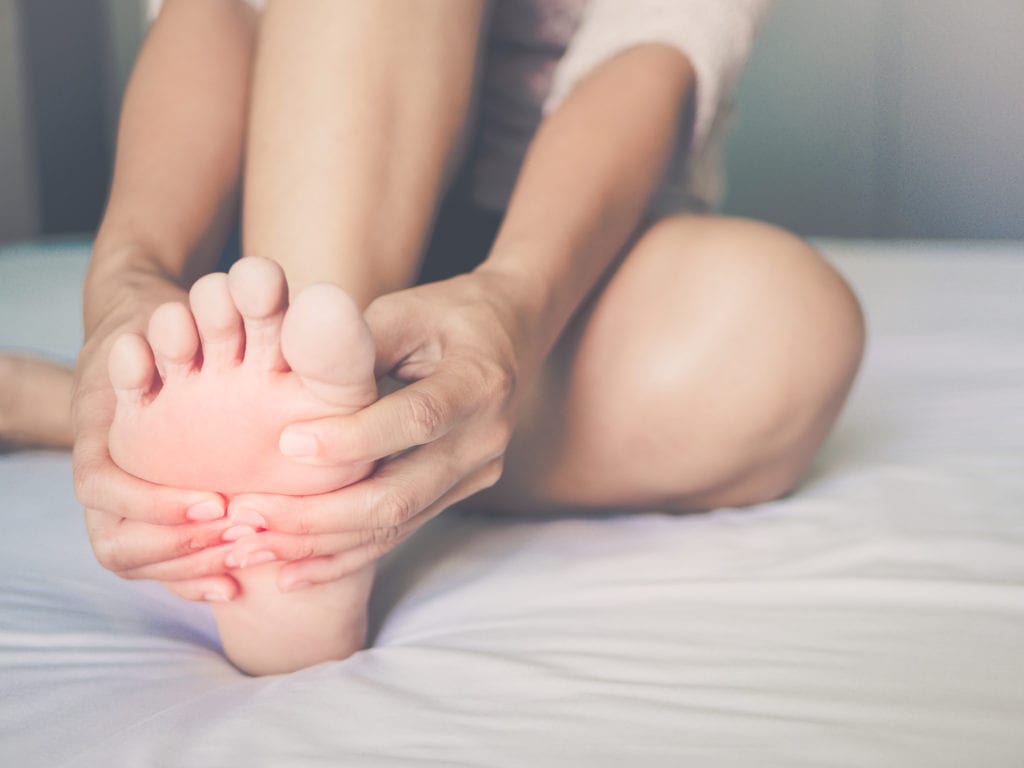Foot pain can turn your daily activities into tedious and painful tasks. Your feet carry the weight of your whole body and are vulnerable to various conditions. Pain can occur in the soles of your feet, your heels, your arches, and the balls of your feet.
Below are some of the most common culprits of physical discomfort in feet and ways they can be treated.
1. Heel spurs
Heel spurs occur when calcium deposits accumulate under the heels of your feet, which typically takes more than a few months. If the tissues in your feet get stretched due to repetitive strain, uncomfortable shoes, or excess weight, they can become inflamed and pressure the bones. Your body will react to this stress by growing additional bone. Ways heel spurs can be treated include:
- Rest and cold compresses
- Comfortable shoes with proper arch support
- Corticosteroid shots
- Physical therapy
- Surgical procedures
2. Hammer toe
Hammer toes are deformed toes that rotate downward instead of pointing forward. They typically form due to injury, extremely narrow footwear, or tightened ligaments in your feet that create stress. Sometimes, this condition can lead to the formation of painful corns and calluses on your toes and the soles of your feet. Your treatment may include wearing toe pads, orthotic insoles, and taking over-the-counter pain relievers. If the affected toe becomes too stiff due to misaligned joints and tendons, hammer toe correction surgery can be performed to restore movement.
3. Bunions
Bunions are bony protrusions at the base of your big toe. They develop when your big toe pulls closer towards other toes. This process can result from ill-fitting shoes or abnormalities in the structure of your feet. If bunions get inflamed, they can become painful and tender to the touch. Try wearing shoes with wider toe boxes that offer plenty of room for your toes. Cold therapy can ease the pain, and soaking your feet in warm water can help reduce inflammation. Severe cases of bunions can be treated with surgery, but the recovery process is lengthy and this condition may recur.
4. Morton's neuroma
When the two bones in your foot rub against each other and pressure the neighboring nerves, your body may react by creating additional nerve tissue called Morton’s neuroma. It often forms between the bones of your third and fourth toe and is prevalent in those spending lots of time standing or walking. Morton’s neuroma can result in inflammation, loss of sensation, tingling, and soreness. Wearing roomy footwear, and resting can help relieve your symptoms. If the pain worsens with time and hampers you from walking normally, cortisone shots or surgical treatment may be necessary.
5. Corns
Corns are tiny, thick patches of skin that can form anywhere on your feet and are quite painful. Corns are typically smaller than callouses with distinct hard centers. They often appear due to irritation and friction caused by ill-fitting shoes. To prevent irritation, you can wear corn pads. However, avoid removing the corns yourself. Instead, visit a podiatry specialist to carefully shave off the dead layer of skin with a special scalpel. Your doctor can also recommend shoes that can decrease your odds of recurring corns.
6. Diabetic foot pain
Hyperglycemia can result in damaged nerves, making you susceptible to neuropathy. This condition can result in pain, weakness, burning, or stinging in your feet. Those with diabetes may also develop foot ulcers, typically at the soles of their feet. Because diabetic nerve damage often results in loss of sensation, you may not notice any sores or other symptoms in your feet for a long period. If you’ve been diagnosed with diabetes, schedule routine checkups with your podiatrist. They can recommend medicines that help relieve neuropathic symptoms.






Comments